80 is the new 60
February 18, 2021 •Sorcha OBoyle

A lot can change in a year.
Think back to your February 2020 self. Feels like a world away, doesn’t it? A year ago, you were probably commuting to work 5 days a week, popping in to Pret for your morning coffee, and looking forward to your summer holidays somewhere balmy and exotic.
Ignorance is bliss, right?
But spring is here again and the post-Covid world is nearly within our grasp (finally!) so it’s time to take stock and use what we’ve learned in the past 12 months to make plans for the future.
More specifically, it’s time to plan how you’re going to target older customer demographics. Older customers have had a digital coming of age during the lockdowns and have embraced online channels in unprecedented numbers. As a brand leader, it’s your job to build an actionable plan to target this group in a way that is profitable and sustainable.
Older customers are a valuable cohort: they tend to have high average order values and are more loyal than younger age groups so it’s worth investing the time to attract them to your brand. But that’s easier said than done and it’s not as simple as fiddling around with your Facebook campaign settings; although older customers have shown that they like using online channels, they have different needs to their younger counterparts and you need to bear that in mind when you’re building your marketing strategies.
Here at more2, we’re all about simplicity. That’s why I’ve pinpointed the 4 actions you need to take to effectively build relationships with your older customers, be they new or existing. These 4 points are a mix of insights and common sense – and they’re designed to cut out the noise and to help you focus on what really matters: your customer.
1. Obsess over your customer
Obsession is never a good thing… Except when it is. And when it comes to your customer, you can never know too much. The biggest mistake we see brands making is directing all their focus on the products, not the people who buy them. It’s your responsibility to redirect that focus onto the customer and listen to what they’re telling you.
Be realistic about who your customer is, not who you want them to be. Make sure your buying personas are informed by concrete data rather than gut instinct – assuming you know who your customer is without proper analysis is a dangerous game.
Compare how customers behave depending on their recruitment channel. You may find that customers recruited via Direct Mail behave differently or are more profitable than those who discover you through Paid Search. This level of granularity is a game-changer: once you know who your most profitable customers are and how they prefer to interact with your brand, you can make sure you’re set up to cater for those customers the way they want you to.
When you take the time to really learn what makes your customers tick, they’ll reward you time and again with their loyalty. So make sure you’re listening.
2. Set the right allowable costs
Knowing how much you can afford to recruit a customer is the key to unlocking profitable growth. As I said before, you may find that some channels recruit more valuable customers than others. This doesn’t mean that you should shut down the less profitable channels but rather that you should adjust your allowable CPA (cost per acquisition) to reflect the value those recruits are likely to bring you over their customer lifecycle.
Accurate customer segmentation is vital to establishing how much you can afford to spend to recruit the right customers via the right channels. This is particularly important for older demographics given the strong correlation between age and loyalty: you should be confident that you’re spending enough to acquire the high-value customers who will love your brand and keep coming back again and again.
3. Leverage your audiences – but don’t split them
It may be tempting to think that older demographics require a different approach on digital channels. That’s not quite right: the fundamentals of good digital targeting still apply.
When your marketing team uploads your audience feeds, they should resist the temptation to over-segment by age. User age is just one of a thousand variables that Google and Facebook use and it’s not one of the most predictive. Instead, the best brands let the AI do its job: provide as much data and as many creative variants (at least 4) as possible and let the platforms work out which creative performs best with each segment.
And if you want a quick chat about your digital set-up, get in touch with us at hello@more2.com – we’re always happy to run a quick digital health-check!
4. Measure incrementality
Incremental contribution is a key metric every marketing (and finance) team should measure. Not all marketing-driven activity is incremental as some customers will buy even if they don’t receive any marketing from you. What’s key, therefore, is being able to pinpoint exactly what actions marketing is driving – and how to improve efficiency by not spending your budget on people who would have concerted anyway.
Facebook and Google’s reporting will always flatter their own platform and each one attributes sales differently. Robust Lift tests therefore must draw on multiple data sources to give a more accurate report on incrementality. So make sure you’re getting the real version of the truth and don’t rely on second-hand news.
Many brands with an older customer base see great results with Direct Mail but it’s a costly channel so it’s important to be able to prove that every catalogue is driving a response. To do this, analyse to what extent a customer’s previous engagement history (e.g whether they’re a store-dominant customer, a online shopper, or a mail-orderer) influences the likelihood of them responding to a mailing by overlaying the channels they previously used with your recency, frequency, and monetary model.
Now what?
In 2021, brands are faced with huge challenges and it can be hard to work out what to focus on when you’re awash with a sea of data. The most valuable thing you can do is strip out the tangential metrics and focus on the one thing that really matters: the customer.
When you prioritise the right metrics and get the right actions in place, you can be confident that your campaigns will attract the right customers at the right time and through the right channels. Once that’s done, it’s plain sailing (well, almost).
If there’s anything here you’d like to hear more about, drop us a line at hello@more2.com and we’ll put you in touch with our team of real experts!

